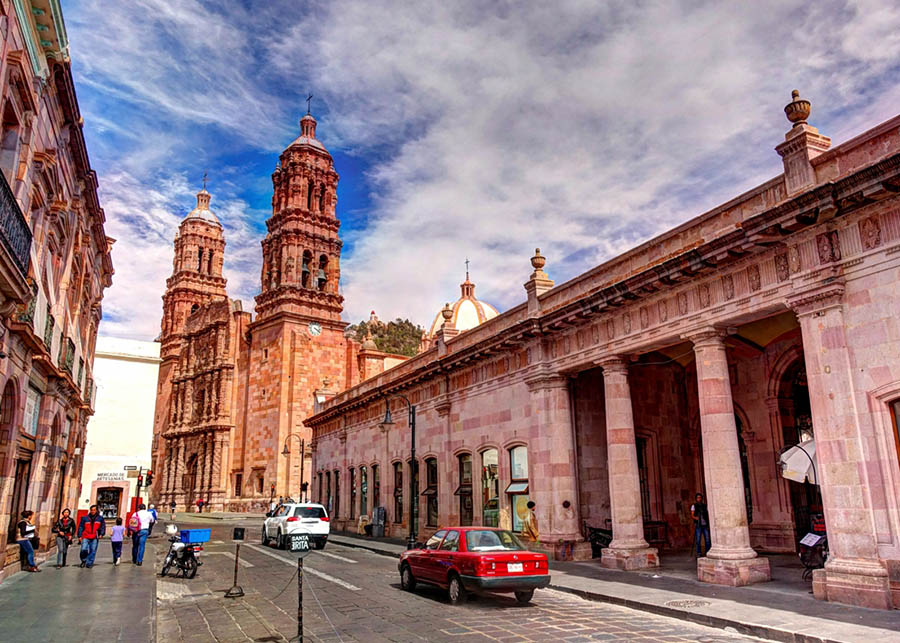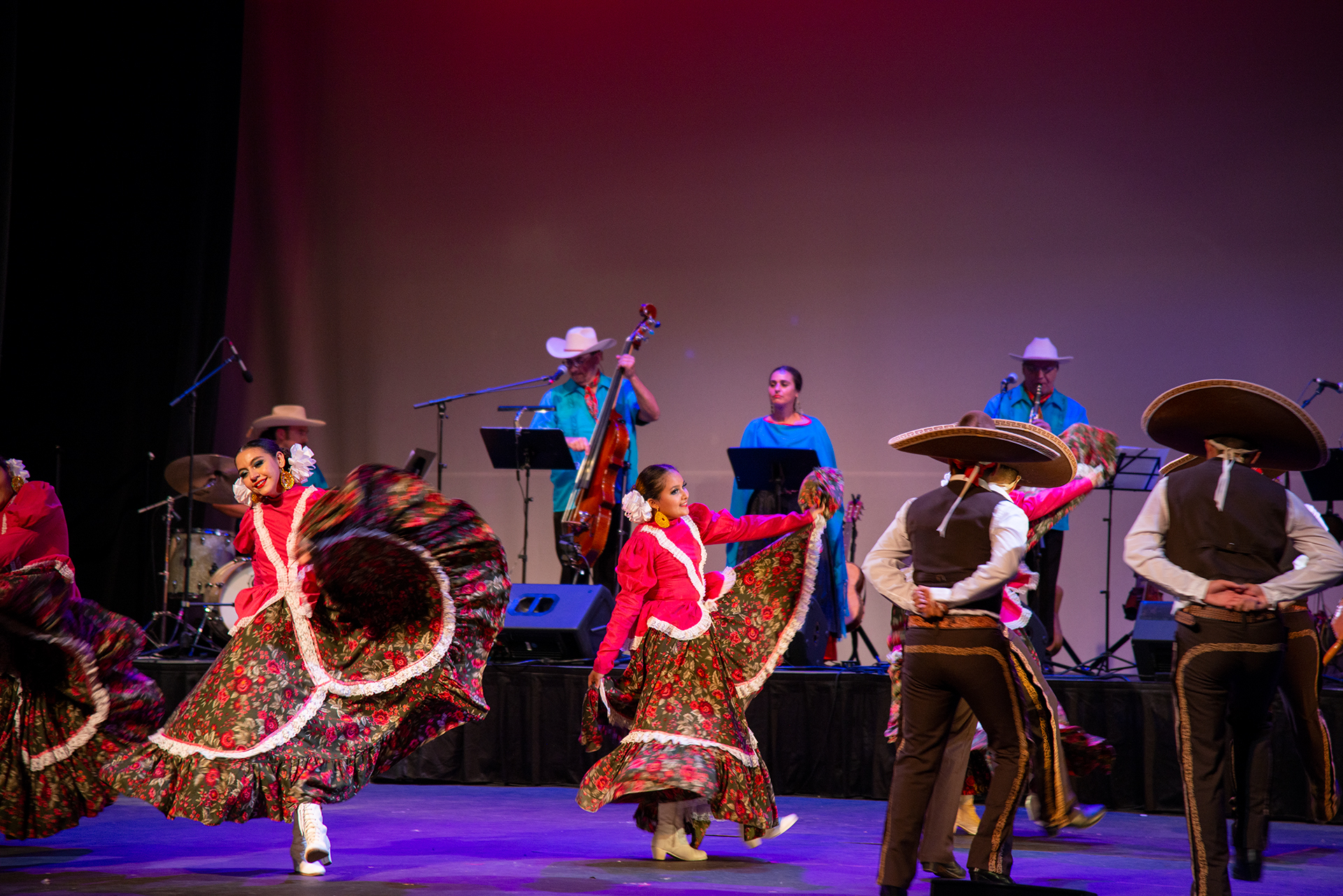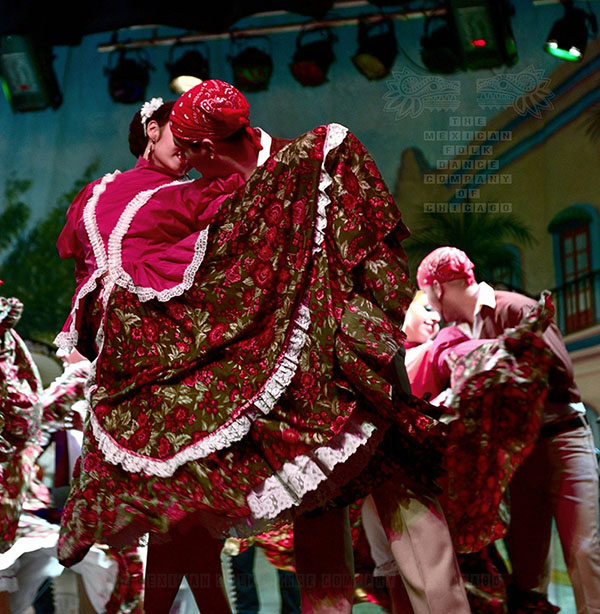The company's version of Zacatecas is based on the state's incredible and peculiar musical style: Tamborazo Zacatecano (The Zacatecas Big Drum band). This Wind and percussion instruments band, is reminiscent of European ensembles left behind by the revolutionary movement of 1910. Local authorities in Central and Northern Mexico decided to use these musicians as Sunday entertainment in local town square gazebos.
The repertoire, composed initially of selected classical and semi-classical pieces, gave way to more traditional music, appealing to the taste of the locals . Thus jarabes, sones, polkas and other danceable rhythms became the selections of choice. Soon after, the bands left the gazebos and were booked to play at dances and other social affairs, or to follow a drinking party down the hillside streets of the city.




